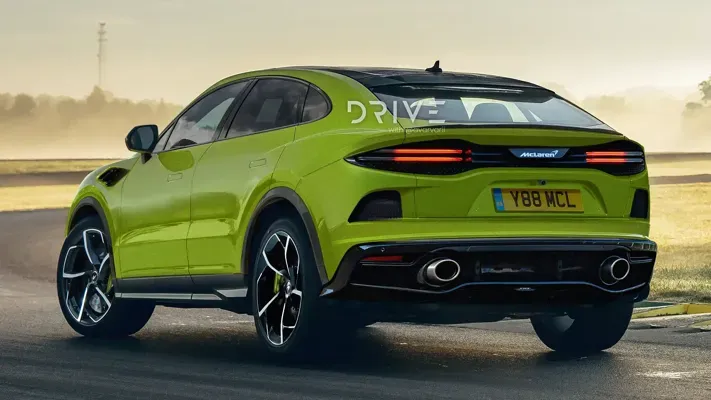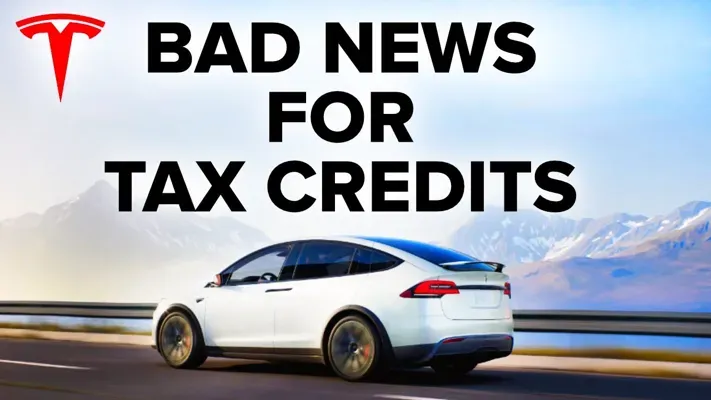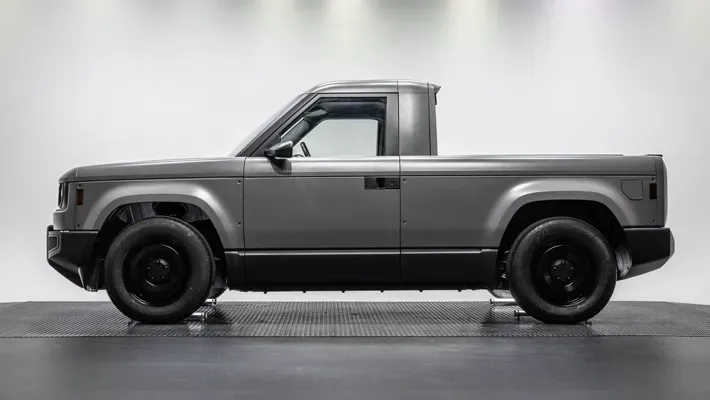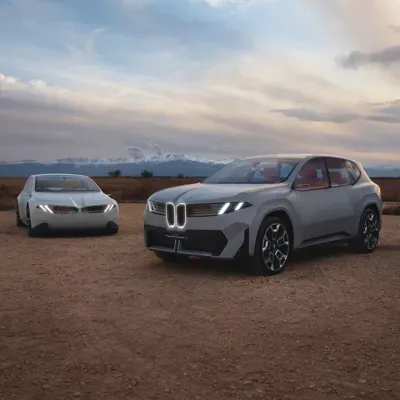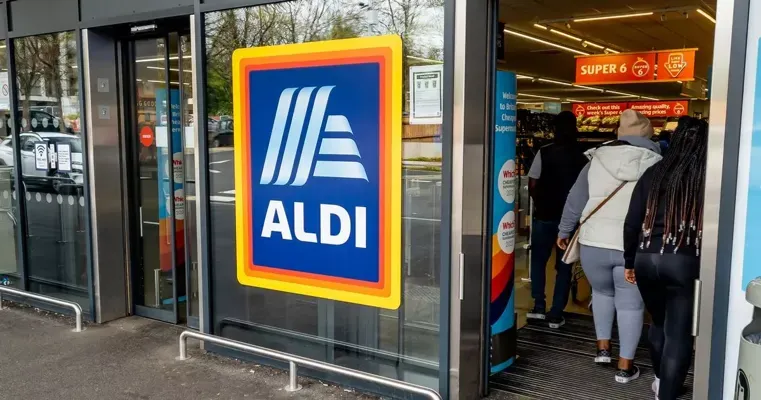The McLaren SUV has become a topic of speculation and intrigue in the automotive world, especially as the company’s CEO hints at expanding beyond its legendary two-door sports cars. While McLaren has gained fame for its stunning supercars like the McLaren Artura, discussions around an SUV model suggest a significant shift in their design philosophy. Recently, McLaren has been aligning with strategic partnerships, including collaboration with Nio, to explore electric vehicle options that complement their existing lineup. As the company navigates exciting changes under new ownership, the possibility of the McLaren SUV could be their next bold step into adjacent market segments. Enthusiasts and industry watchers alike are eager to see how McLaren plans to blend luxury and performance in such a versatile vehicle.
The concept of a McLaren sports utility vehicle is stirring considerable excitement among fans of high-performance automobiles. As the iconic brand looks to innovate and adapt, the potential introduction of an SUV signifies McLaren’s intent to broaden its automotive repertoire. Although details remain under wraps, recent statements from the leadership suggest a strategic pivot towards more family-friendly options while still maintaining the essence of speed and elegance intrinsic to McLaren models. This forward-thinking approach, coupled with collaborations aiming at integrating electric technologies, indicates a promising evolution for McLaren in the competitive automotive landscape. The prospect of an SUV, alongside their celebrated supercars and electric endeavors, places McLaren on a path that can redefine their brand for the modern consumer.
The Future of McLaren: Beyond Two-Door Sports Cars
As the automotive landscape shifts dramatically towards broader consumer bases, McLaren’s CEO, Nick Collins, has opened the door to potential new vehicle offerings. While he has not confirmed the development of a McLaren SUV, Collins hinted at introducing models beyond the traditional two-door configuration. This indicates that McLaren is considering diversifying its portfolio, tapping into markets that demand larger, more versatile vehicles. The idea of expanding into adjacent segments elevates McLaren’s strategy, which has been traditionally focused on high-performance, lightweight supercars.
Collins’ statement reflects a keen awareness of evolving consumer preferences, especially in light of the automaker’s recent acquisition by CYVN Holdings. This ownership change suggests a new strategic direction, allowing McLaren to innovate while maintaining its performance legacy. The forecast includes more than just an increase in seat count; it may involve integrating hybrid technologies or even full-electric vehicles as part of their upcoming roadmap. As such, one can reasonably anticipate McLaren developing pioneering technologies while embracing the practicality of larger vehicle models.
Potential McLaren SUV: Exploring the Possibilities
While an explicit confirmation of a McLaren SUV is still absent, the mere suggestion of expanding into multi-seat vehicles is telling of what could be on the horizon. The market for performance SUVs, especially those that boast a luxury sports heritage, is thriving and has been successfully embraced by brands like Ferrari with the Purosangue. If McLaren decides to enter this arena, it will ideally blend supercar performance attributes with the practicality required by consumers seeking family-friendly vehicles.
Moreover, the potential SUV could result from McLaren’s collaboration with Nio, a strategic partnership that emphasizes shared technology and efficient manufacturing processes. With Nio’s prowess in electric vehicle innovation, a McLaren SUV could very well feature an electric powertrain, aligning with global trends toward sustainability. This partnership reinforces McLaren’s commitment to not only maintaining its performance reputation but also innovating in the fast-growing electric vehicle sector, suggesting an exciting evolution that is closely tied to consumer expectations.
McLaren’s Evolution Through Electric Mobility
The idea of a McLaren electric vehicle (EV) has been floated in discussions for some time now. CEO Nick Collins has indicated that while an immediate electric model may not be in the works, the company is exploring how electric performance can redefine its offerings. With the automobile industry rapidly pivoting towards electrification, integrating electric components into McLaren’s lineup speaks volumes about its forward-thinking attitude, aimed at sustaining both legacy and market competitiveness.
Furthermore, as McLaren continues to finalize its product roadmap through 2030, developments in electric mobility will play a significant role in redefining the brand’s core identity. The collaboration with Nio, a renowned player in the EV market, positions McLaren to leverage cutting-edge technology that can enhance performance while embracing eco-friendliness. This strategic move underscores that McLaren is not just about supercar excellence; it is also about being at the forefront of automotive innovation, adapting to new standards, and meeting consumer demand for greener alternatives.
McLaren Artura: A Glimpse into Performance Innovation
The McLaren Artura stands as a testament to the manufacturer’s commitment to performance and innovation, blending hybrid technology with the brand’s signature racing pedigree. This supercar exemplifies how McLaren is evolving, integrating advanced engineering and cutting-edge design to create a car that satisfies the thrill-seeker while being mindful of efficiency. The Artura’s lightweight construction coupled with its powerful hybrid powertrain exemplifies McLaren’s goal of pushing boundaries and reflecting sophistication in every facet of automotive performance.
Moreover, the Artura symbolizes a critical step in McLaren’s journey towards electrification, which is essential for the brand’s future sustainability. As they look to incorporate more eco-friendly technologies into their lineup, the Artura will likely inform the design and engineering of future models, whether they be traditional supercars or the anticipated SUV. It showcases how McLaren can still resonate with its sports car heritage while preparing for an electrified future.
The Impact of CYVN Holdings on McLaren’s Future
The recent acquisition of McLaren by CYVN Holdings has created a significant buzz in the automotive community regarding the company’s future direction. This change not only brings substantial financial backing but also allows McLaren to rethink its strategies in response to a rapidly evolving market. With the backing of a sovereign wealth fund, McLaren could explore ambitious projects and partnerships that enhance its brand identity and broaden its market reach, potentially introducing new models that meet diverse consumer demands.
With CYVN’s influence, expectations are high for McLaren to innovate continuously and perhaps even pivot towards segments including an SUV. The capital infusion may facilitate faster research and development timelines, supporting more daring ventures into electric mobility and luxurious lifestyle vehicles. The collaboration with Nio, as part of this progressive agenda, could radically transform McLaren’s offerings and make it a formidable player in a wider automotive landscape.
Navigating Uncertain Waters: The Future of McLaren
As McLaren navigates its future following the acquisition, uncertainty looms, yet opportunity abounds. The leadership transition and new ownership bring forth a fluid dynamic that the team must maneuver with precision. CEO Nick Collins now has the chance to infuse new vision into the company, diversifying its product offerings, and embracing electric technology while maintaining the brand’s core performance values. The key challenge lies in balancing innovation with tradition, ensuring that the essence of McLaren remains intact as it evolves.
The uncertainty surrounding McLaren’s future vehicle lineup, particularly regarding the speculative SUV, raises many questions among enthusiasts and prospective buyers alike. However, Collins’ assurance of a solid product roadmap by 2030 offers a glimmer of hope, indicating that plans are firmly in place. Anticipating how McLaren will leverage its collaborations, investor support, and historical strengths will be crucial to understanding its trajectory in an automotive market that increasingly favors diverse, performance-oriented offerings.
The Role of Partnerships in McLaren’s Growth Strategy
Strategic partnerships have always been fundamental to McLaren’s success, and the recent alignment with Nio is a clear indication of this philosophy in action. Through collaborative efforts, McLaren can enhance its engineering capabilities and speed up the production processes without sacrificing the quality it’s known for. By integrating Nio components, McLaren can also leverage advanced technologies that optimize performance and efficiency, demonstrating how partnerships can lead to substantial competitive advantages.
Moreover, as McLaren looks to expand its vehicle offerings, partnerships will play a crucial role in navigating new segments, particularly in electric mobility. The shared expertise with Nio can not only enhance vehicle quality but also redefine consumer expectations within the luxury performance category. The collaborative spirit between McLaren and its partners will be pivotal in crafting a lineup that meets future market demands while remaining true to its heritage of high-performance engineering.
Anticipating the Future: McLaren’s 2030 Vision
With a clear roadmap established through to 2030, McLaren is poised to redefine its niche in the automotive landscape. This vision encapsulates not just the traditional supercar ethos but also hints at innovative new directions involving larger, more practical vehicle offerings. The anticipated models may feature groundbreaking electric technologies, underscoring McLaren’s resolve to stay at the forefront of the performance and eco-friendly vehicle movement.
As consumers increasingly prioritize sustainability alongside performance, McLaren’s roadmap is a crucial element in maintaining its prestigious status while appealing to a broader market. By aligning with Nio and embracing diversification, McLaren can turn the uncertainty of its future into a platform for growth and innovation. The company’s commitment to excellence can pave the way for exciting new offerings that resonate with both die-hard fans and a new generation of automotive enthusiasts.
Frequently Asked Questions
Is McLaren developing an SUV in the near future?
While McLaren’s CEO did not confirm the development of a McLaren SUV, he mentioned that the brand is planning to expand its vehicle lineup beyond supercars. This includes models with ‘more than two seats’, which may hint at the possibility of an SUV or crossover in the future.
What has McLaren’s CEO said about the company’s future vehicle lineup?
McLaren’s CEO, Nick Collins, indicated that the company has a locked-in product roadmap through 2030, aiming to diversify beyond traditional supercars. While there are no definite plans for a McLaren SUV yet, the focus will be on vehicles with more than two seats.
How does McLaren’s partnership with Nio influence its vehicle development?
The partnership with Nio is crucial for McLaren, especially in manufacturing efficiency. CEO Collins stated that Nio components may be integrated into McLarens soon, allowing for faster production and possibly influencing the development of future models, including a McLaren electric vehicle.
What can we expect from McLaren’s upcoming models?
Expect McLaren to introduce vehicles that expand beyond their traditional supercar lineup. This could include a McLaren SUV and electric models, as suggested by the CEO’s comments about entering ‘adjacent segments’ and the importance of the Nio partnership in upcoming designs.
Is a McLaren electric vehicle part of the future plans?
Yes, McLaren is considering the development of an electric vehicle, although it may not materialize in the immediate future. The CEO has acknowledged that while an EV is on the table, the priority currently lies in broadening the vehicle lineup.
What previous models indicate McLaren’s direction towards an SUV?
The latest models like the McLaren Artura, a hybrid supercar, showcase McLaren’s commitment to innovation and technology. While an SUV has not been explicitly confirmed, the development of models with more than two seats suggests a shift in strategy that could include SUV-like offerings in the future.
How will McLaren’s shift affect its brand identity as a supercar manufacturer?
McLaren’s expansion beyond supercars, including possible SUVs and electric vehicles, could redefine its brand identity. This shift reflects a commitment to adapt to market trends while still honoring its legacy of performance and luxury in automotive engineering.

